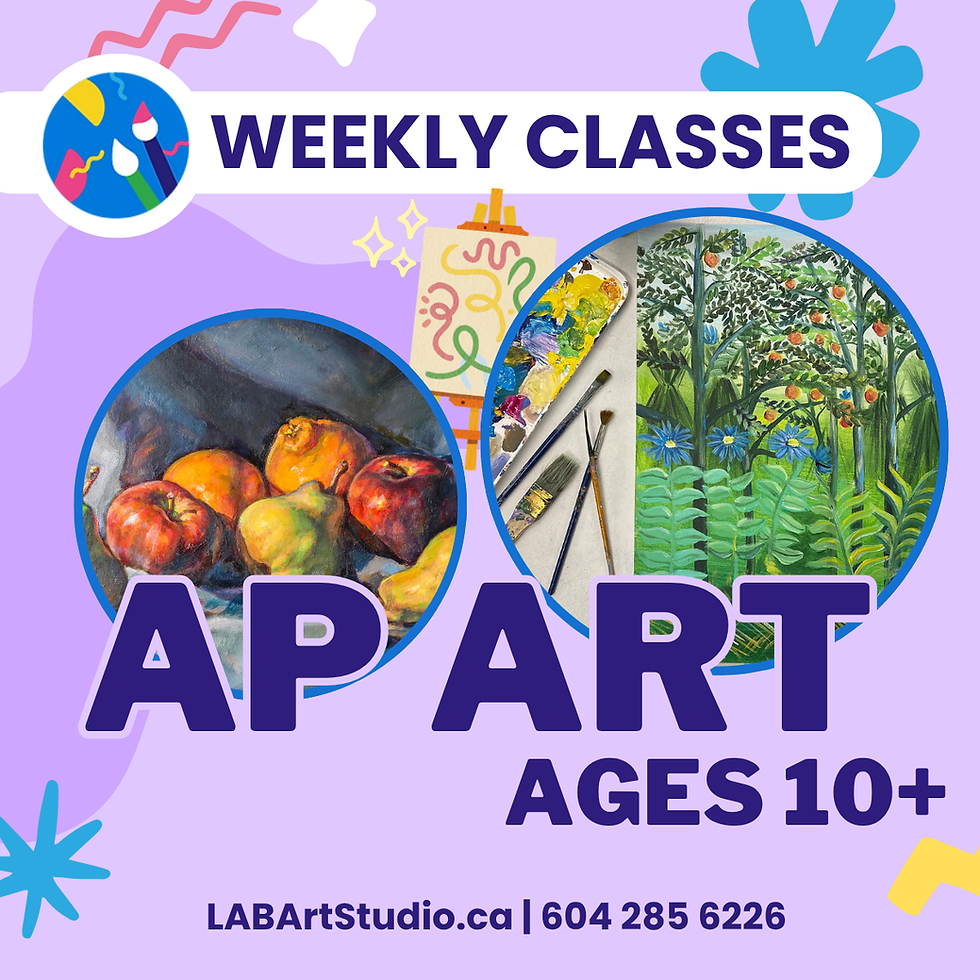New Theme: Favourite Toys Inspired by Roy Lichtenstein @ LAB Art Studio
- LAB Language Arts Base
- Apr 20, 2023
- 3 min read

Hi LAB Friends! Join us for our Weekly Classes from May to June, and design new or recreate nostalgic favourite toys and collectibles inspired by a LAB favourite: Roy Lichtenstein! We'll use bright and bold colours, practice outlining, creating dotted patterns and really have fun with this style of Pop Art!
Keep reading to find out more about this featured artist and his life. Don’t forget to sign up for our Weekly Classes to make your own Roy Lichtenstein-inspired art!
Overview
This is Roy Lichtenstein, and he was an American pop artist in the mid-1900s. He was a leading figure in the new art movement and utilized Pop Art through parody. He was inspired by comic strips or comic book style and popular ads. Some of his most influential pieces are "Whaam!", "Drowning Girl", and "Look Mickey". However, his most expensive piece was titled "Masterpiece" and sold for a whopping US $165 million in 2017!
Early Life
Roy Lichtenstein was born in New York City in 1923 to an upper-middle-class German-Jewish family. His father was a real estate broker and his mother was a homemaker. He became interested in art through school and studied at Ohio State University. However, his education was interrupted by World War II as he was enlisted in the army from 1943-1946. He went on to finish his art education at Ohio State University, occasionally displaying pieces in New York galleries. He later taught art at the State University of New York at Oswego.
Inspiration
Roy Lichtenstein was heavily inspired by war and romantic stories, “I was interested in anything I could use as a subject that was emotionally strong – usually love, war, or something that was highly charged and emotional subject matter to be opposite to the removed and deliberate painting techniques” (Lichtenstein, Art Dependence Magazine). In his piece Drowning Girl, he used oil and Magna paint to appropriate the lead story in DC Comics’ Secret Hearts. Roy Lichtenstein used thick outlines, bold colours, and Ben-Day dots (an in-expensive mechanical printing method developed in the late 19th century that relied on small coloured dots that are spaced and combined to create shading and colours in images) as if created by photographic reproduction.
Critics
Critics challenged the originality of Lichtenstein’s work, to which he responded by saying that “the closer my work is to the original, the more threatening and critical the content. However, my work is entirely transformed because my purpose and perception are entirely different. I think my paintings are critically transformed, but it would be difficult to prove it by any rational line of argument" (Lichtenstein, Roy Lichtenstein Bibliography). In fact, most of his best-known works are close by not exact copies of comic book panels.
Legacy
Following his death in 1997, the Roy Lichtenstein Foundation was established (1999). To his day, his work is still seen by many around the world, mostly displayed in The National Gallery of Art in Washington D.C but also in other art museums around the world.
Hope you enjoyed learning a bit about Roy Lichtenstein, and can't wait to learn more together. Tune in to our Weekly Classes for Toddlers, Ages 3-5, 6-9, and 10+ to make some incredible Pop Art!
From now until end of April, be sure to sign up for both months to save 10%! Use code LAB10 at check out :)
Can't wait to create with you!
Amazing Andrea










Comments